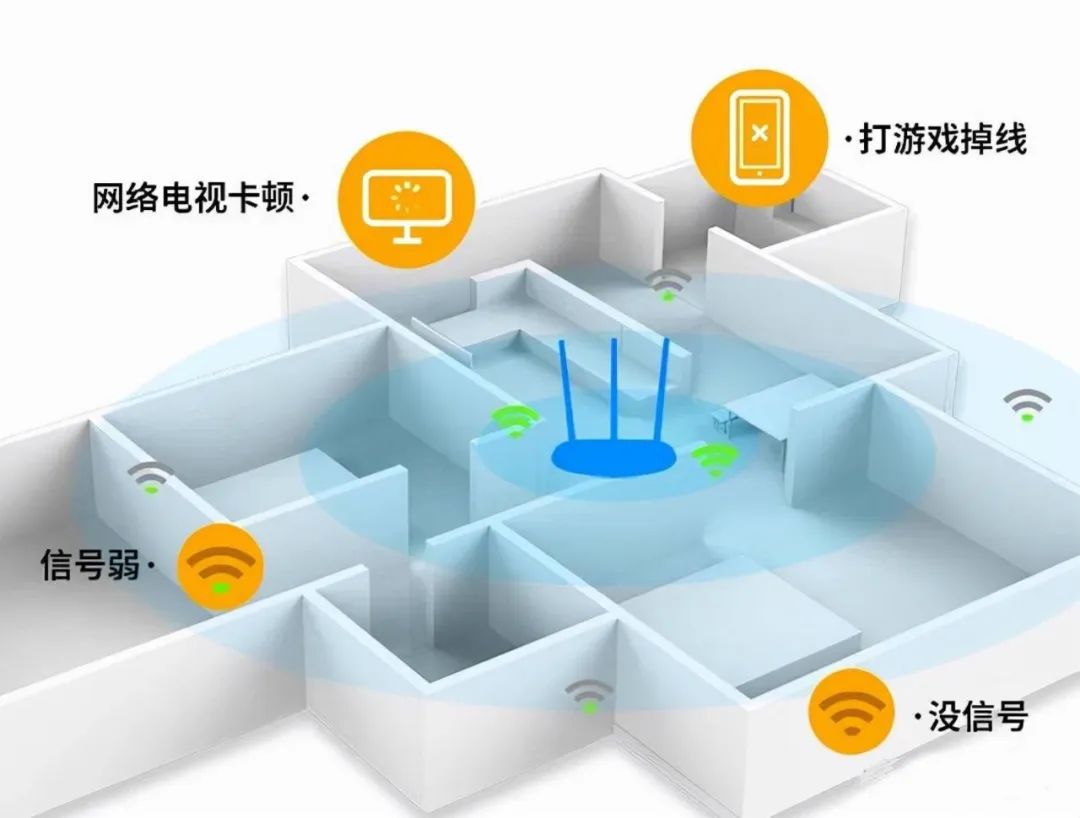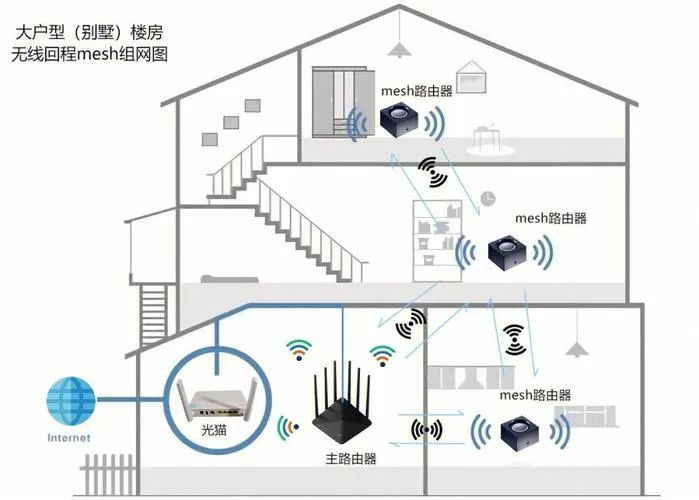Mesh networking is like setting up a “smart spider web” in your home, allowing Wi-Fi signals to cover every corner without dead spots.
For example:
Your home router is the “signal lighthouse” in the living room, but the signals in the bathroom and bedroom keep dropping. The traditional method is to add a signal booster (repeater), but it’s like using a walkie-talkie to communicate—each time the message is relayed, it gets weaker, the internet speed slows down, and you have to manually switch networks.

In contrast, mesh networking works like this:
1. You buy 2-3 mesh-compatible routers (commonly referred to as “nodes”)
2. Place them in the living room, bedroom, and study (like setting up several small lighthouses in the rooms)
3. These lighthouses will automatically connect and form a smart network:
– Your phone will automatically find the nearest or strongest node
– Nodes will intelligently select the optimal path for data transmission (for example, data can be sent directly from the living room to the bedroom without going back to the main router)
– Adding a new node is like plugging in a block; it automatically joins the network when powered on

Results:
– You can play games in the bathroom without lag (it automatically switches to the node next to the bathroom)
– Walking from the kitchen to the balcony, the video won’t buffer (seamless switching)
– If you build an attic at home, just plug in a new node
It’s like having a team of Wi-Fi sentinels that can position themselves wherever needed, communicating efficiently with each other using signals, making it smarter than a single router shouting to cover the area.